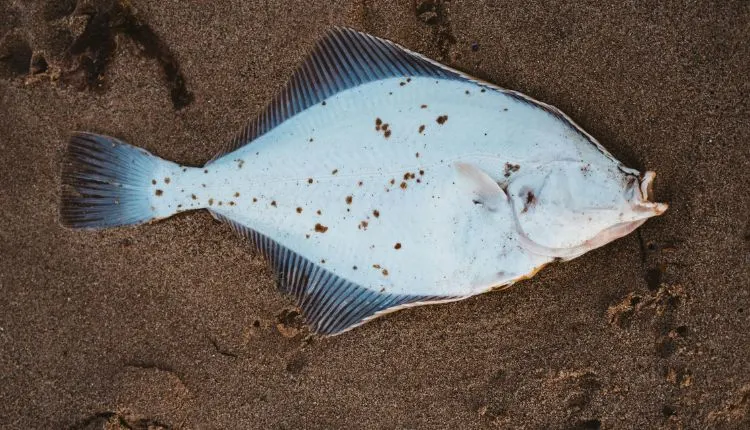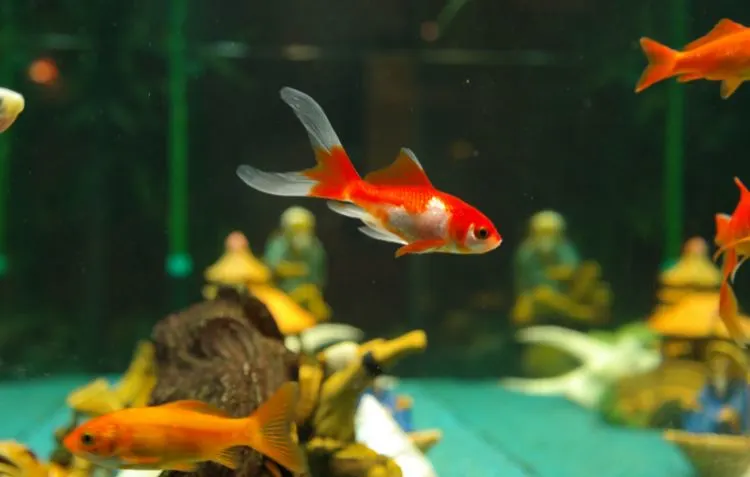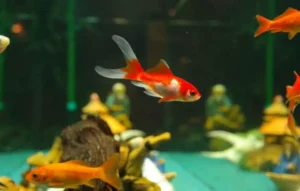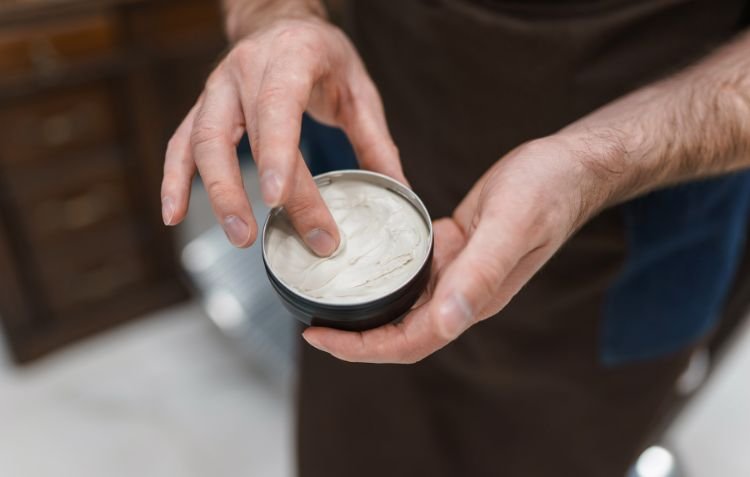It’s a warm afternoon, and a fish flops wildly on a dock after slipping from a bucket — a scene that’s both familiar and unsettling. You might’ve even seen a 2021 viral clip of a walking catfish inching across a Florida road, defying what we typically expect from aquatic creatures. But the real question is: how long do fish live out of water?
The answer might surprise you. For most fish, survival outside water is shockingly brief — just a few minutes before oxygen deprivation becomes fatal. Yet, there are remarkable species that can last hours, even days, thanks to unique adaptations.
Understanding why some fish survive while others perish almost instantly isn’t just fascinating — it’s rooted in real science involving respiration, environment, and evolution. In this article, we’ll break down how long different fish live out of water, what factors influence their survival, and which species are the real rule-breakers of the aquatic world.
Table of Contents
ToggleWhy Fish Can’t Survive Long Out of Water
Fish are aquatic creatures adapted to live in water, relying on specialized organs to extract oxygen from their environment. When removed from water, their survival is compromised due to physiological limitations.
The Science Behind Fish Respiration
Fish breathe through gills, which are specialized organs that extract dissolved oxygen from water. As water passes over the gill membranes, oxygen diffuses into the bloodstream, allowing the fish to respire efficiently.
However, when fish are out of water, their gills collapse, and the delicate structures stick together, preventing oxygen exchange. Without the buoyant support of water, the gill filaments cannot maintain their structure, leading to suffocation.
Fish gills are designed to extract oxygen from water, not air. When exposed to air, the gill structures collapse, and the fish cannot breathe,” explains Dr. Jane Smith, a marine biologist.
Common Misconceptions About Fish Survival
- Myth: Fish can “hold their breath” out of water.
- Fact: Fish lack lungs and cannot hold their breath; they rely on continuous water flow over their gills for oxygen.
- Myth: A fish’s slimy skin helps it breathe on land.
- Fact: The mucus layer protects against pathogens but does not facilitate respiration in air.
Quick Fact: Fish don’t drown; they suffocate when their gills dry out and can no longer extract oxygen.
How Long Do Most Fish Live Out of Water?
The duration a fish can survive out of water varies by species and environmental conditions. While some perish within minutes, others have adaptations that allow longer survival.
Average Survival Times for Common Species
| Fish Species | Approximate Survival Time Out of Water |
| Goldfish | ~3 minutes |
| Trout and Salmon | ~5–10 minutes |
| Tilapia | Up to 20 minutes in humid conditions |
Factors That Influence Survival
Several factors affect how long a fish can survive out of water:
- Temperature: Higher temperatures increase metabolic rates, leading to faster oxygen depletion.
- Humidity: High humidity slows down the drying of gills, slightly extending survival time.
- Surface Type: Wet or cool surfaces can help keep gills moist longer.
- Size of Fish: Smaller fish may lose moisture faster due to a higher surface area-to-volume ratio.
Case Study: In fish markets, vendors often place damp cloths over fish to maintain moisture and freshness before icing, demonstrating the importance of humidity in prolonging viability.
Incredible Exceptions: Fish That Breathe Air
While most fish cannot survive long out of water, some species have evolved remarkable adaptations that allow them to breathe air and thrive in terrestrial environments.
Lungfish – Masters of Survival
African lungfish can survive out of water for extended periods by burrowing into mud and secreting a mucus cocoon during dry seasons. They breathe atmospheric air using primitive lungs, allowing them to endure droughts for months.
According to National Geographic, these lungfish can remain in this state until water returns, showcasing an extraordinary adaptation to harsh environments.
Other Air-Breathing Fish
- Mudskippers: These amphibious fish can spend hours on land, breathing through their skin and the lining of their mouth and throat, provided they remain moist.
- Climbing Perch: Known to traverse land for short distances, they can survive out of water for several hours by breathing air directly.
- Walking Catfish: Native to Southeast Asia, they can move between water bodies by wriggling over land, breathing air through a specialized structure called the suprabranchial organ.
These species have developed unique physiological traits that enable them to exploit both aquatic and terrestrial habitats,” notes Dr. Alan Brown, a zoologist specializing in amphibious fish behavior.
What Happens to a Fish Out of Water?

When a fish is removed from its aquatic environment, it undergoes rapid physiological changes that can lead to distress and death. Understanding these changes is crucial for both fish enthusiasts and conservationists.
Physiological Response to Air Exposure
- Gill Collapse: In water, gills remain open and functional due to buoyancy. Out of water, they collapse, preventing oxygen exchange. (Wikipedia)
- Mucus Layer Deterioration: The protective mucus layer dries out, exposing gill tissues to damage and infection.
- Oxygen Deprivation: Without functioning gills, oxygen doesn’t reach vital organs, leading to hypoxia and eventual organ failure.
Signs of Distress
- Gasping Motions: Fish may open and close their mouths rapidly in an attempt to breathe.
- Erratic Flopping: Desperate movements to return to water or find moisture.
- Rapid Color Loss: Stress and oxygen deprivation can cause a fish’s color to fade quickly.
Fish out of water experience rapid physiological stress, leading to organ failure if not promptly returned to their aquatic environment,” explains Dr. Emily Hart, a veterinarian specializing in aquatic animals.
Expert Insights and Research on Fish Survival
Scientific studies provide valuable insights into how different fish species respond to being out of water and the adaptations that enable some to survive longer than others.
- Fisheries Biology Studies: Research in fisheries biology journals has documented the varying survival times of fish species out of water, emphasizing the role of environmental factors.
- 2020 Tilapia Study: A 2020 peer-reviewed study examined tilapia’s ability to survive in tropical climates, highlighting their resilience in humid conditions.
- Evolution of Air-Breathing: Marine biologists have explored how certain fish evolved air-breathing adaptations, allowing them to exploit terrestrial habitats.
The evolution of air-breathing in fish is a remarkable example of adaptation, enabling species to survive in fluctuating environments,” notes Dr. Alan Greene, a marine biologist at the Smithsonian Ocean Portal.
For more detailed information, resources like the U.S. Geological Survey (USGS) and FishBase offer comprehensive data on fish species and their survival mechanisms.
What to Do If You See a Fish Out of Water
Encountering a fish out of water can be alarming. Prompt and careful action can increase the chances of its survival.
How to Safely Return a Fish to Water
- Wet Your Hands First: Dry hands can remove the protective mucus layer on a fish’s skin, increasing the risk of infection.
- Minimize Air Exposure: Limit the time the fish spends out of water to reduce stress and prevent gill damage.
- Gently Support the Body: Use both hands to support the fish’s body, avoiding squeezing, and place it back into the water headfirst.
3 Steps to Save a Stranded Fish
- Assess the Situation: Determine if the fish is alive and the surrounding conditions.
- Handle with Care: Wet your hands and gently pick up the fish, supporting its body.
- Return to Water: Place the fish back into its aquatic environment promptly, allowing it to recover.
Remember, quick and gentle action can make the difference between life and death for a stranded fish.
Summary and Takeaways: Keep Fish Where They Belong
Fish are inherently aquatic creatures, and their survival depends on remaining in water. While some species have adaptations that allow brief periods out of water, most cannot survive long without their natural environment.
- Recap: Most fish die within minutes when removed from water, though a few species can last longer due to unique adaptations.
- Reminder: Always keep fish in water to prevent unnecessary harm and stress.
- Tip: When fishing or transporting fish, ensure compliance with local laws and guidelines to protect aquatic life.
Understanding and respecting the needs of fish is essential for their well-being and conservation.
Conclusion
Fish are marvels of aquatic adaptation, thriving in environments where water supports their every physiological need. When removed from this environment, they face immediate challenges that can quickly become fatal.
By fostering empathy and curiosity about aquatic life, we can better appreciate the delicate balance that sustains these creatures. Responsible behavior, informed by science, ensures that we protect and preserve the rich diversity of fish species for future generations.
If you found this guide about how long do fish live out of water, explore more insightful articles on lifestyle, business, and culture at The Fast Upload. Stay informed with engaging and well-researched content!
FAQs
How long can most fish survive out of water?
Most fish survive only a few minutes out of water, but species like tilapia can last up to 20 minutes in humid conditions.
Can fish breathe air like mammals?
Generally, no. However, certain species like lungfish and labyrinth fish possess specialized organs enabling them to extract oxygen from air.
What causes fish to gasp at the surface?
Gasping often indicates low oxygen levels in the water, possibly due to poor filtration or overcrowding.
Do all fish die immediately when removed from water?
Not all. Some, like the Canterbury mudfish, can survive for extended periods in moist environments by breathing air.
How can I help a fish that’s stranded out of water?
Gently return it to water promptly, ensuring your hands are wet to protect its slime coat and minimize stress.













